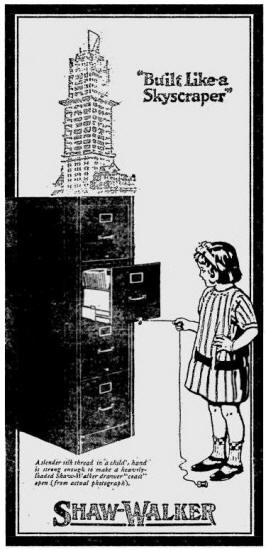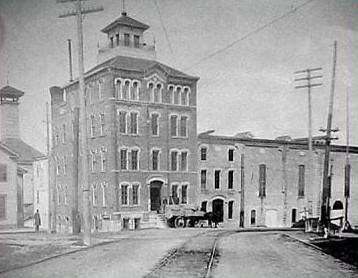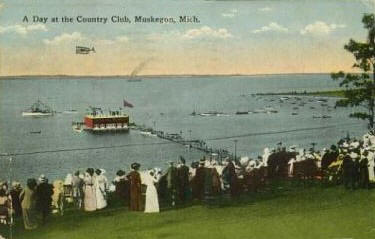|
Click here to view more images of Muskegon |
|
|
 |
|
|
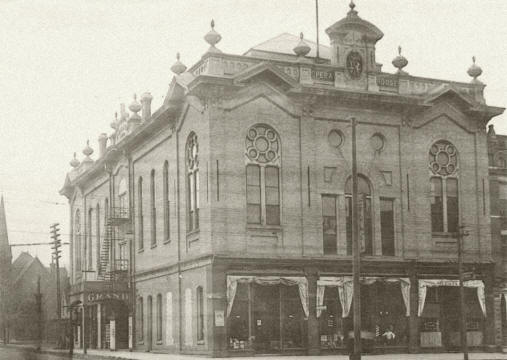 |
|
Incorporated in March 1899 by Arch W. Shaw and Louis C. Walker, the
Shaw-Walker Company originally located in two vacant stores on the
side-street frontage of the Opera House block in downtown Muskegon. The
business occupied an area measuring 36 x 70 feet. |
|
|
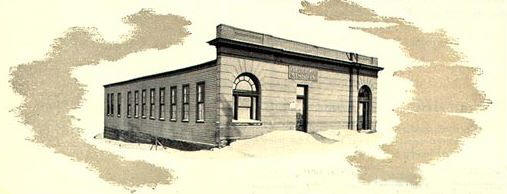 |
 |
|
The company relocated a year later to a new one story building at
Seventh St. and Western Avenue.
Within
four years, Shaw-Walker had grown from 11 employees to 175 with sales of
it's filing devices in every state in the U.S. and beyond. (The one
story building was later occupied by Muskegon Laundry, and in later
years, the Gospel Mission. It was razed in 1954.) |
|
|
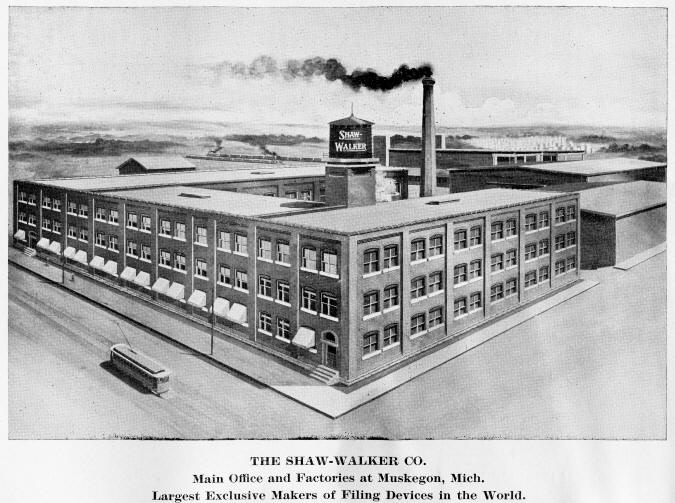 |
|
A consolidation with the Muskegon Cabinet Company in 1903 began a
shift of manufacturing to the Muskegon Cabinet location on W. Western
Ave between Division and Hudson. Within six months, work began on
expanding the three story facility. |
|
|
 |
|
In 1911, a three
story 66-foot square office building was constructed at the corner of Division and
Michigan Avenue using attractive paving bricks for the facade. A five-story addition
followed. Constructed at the corner of W.
Western and Division, the building was designed in 1912 by
Albert Kahn,
"the
foremost American industrial architect of his day," and his associate, Ernest Wilby.
Built in early 1913, the structure
housed manufacturing of the company's latest line of products - steel filing
cabinets. |
|
|
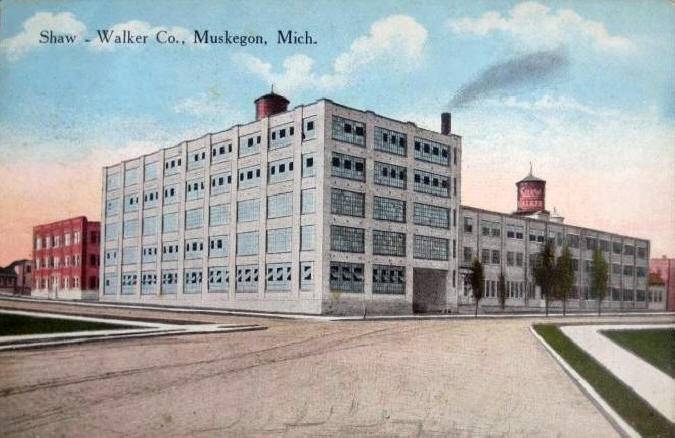 |
|
|
|
With the addition to the product line, Shaw Walker saw continued growth.
The slogan, "Built Like a Skyscraper" began to appear in advertising
around 1917.
|
|
|
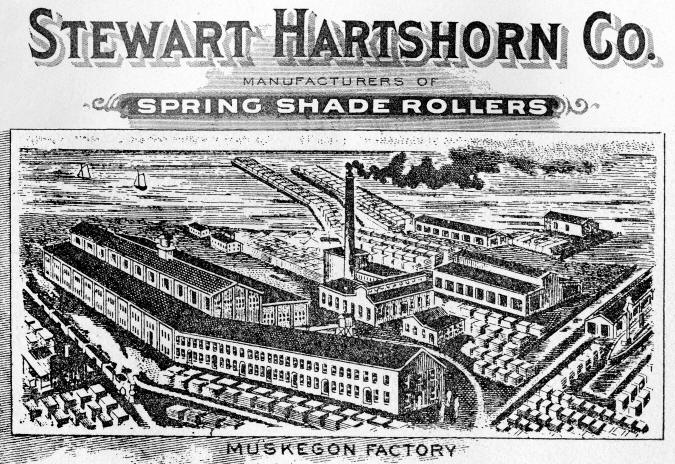 |
|
The Stewart Hartshorn Company. Manufacturers of spring shade rollers,
1912 advertising indicated that the plant had 385,000 square feet of
floor space and occupied 36 acres of land, with 2 miles of dock frontage
boarding the shore of Muskegon Lake. |
|
|
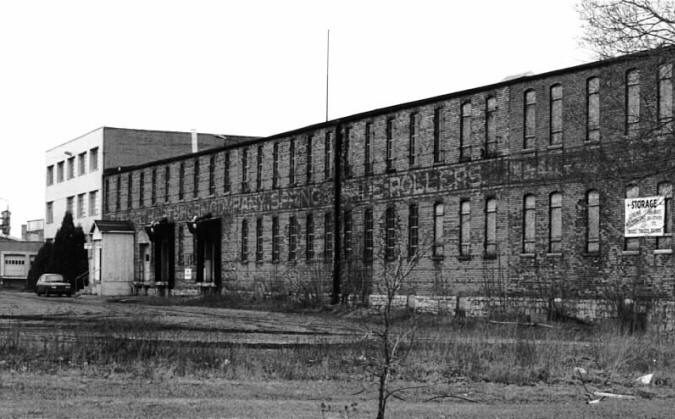 |
|
|
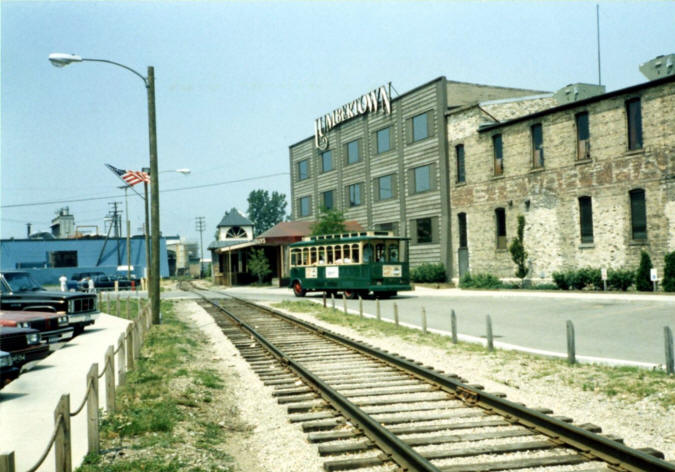 |
|
Later redeveloped into shopping destination known as Lumbertown. |
|
|
|
|
| The Muskegon Brewing Company at Lakeshore Drive and Muskegon Avenue. |
 |
|
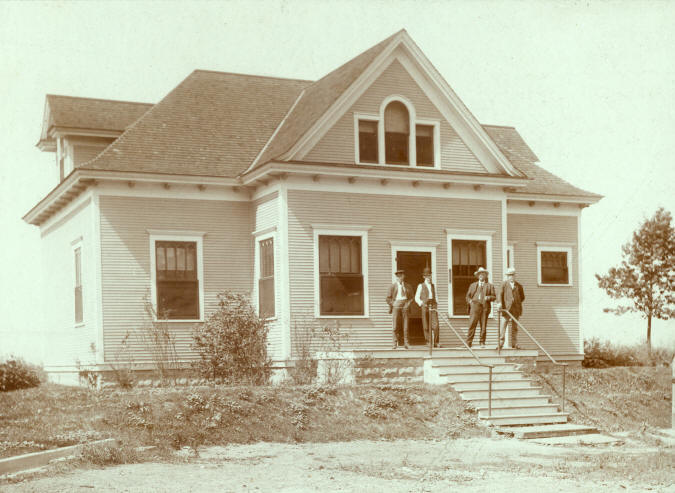 |
|
The old offices of the Muskegon Brewing Company once located at the top
of Brewery Hill. |
|
|
 |
|
Alexander Rodgers house -
1259 Lakeshore Drive - today known as the Port City Victorian Inn Bed &
Breakfast. |
|
|
In 1912, lumberman Thomas Hume donated money
for the construction of an "Old People's Home" at the
intersection of Lake Street and Southern Avenue.
Today, it is know as the Hume
Home. |
 |
|
|
|
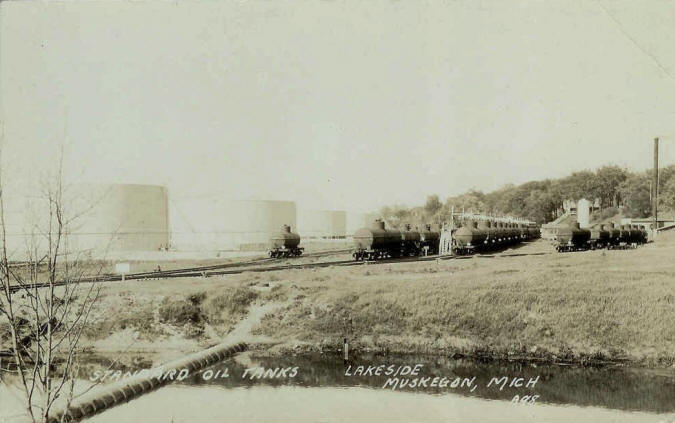 |
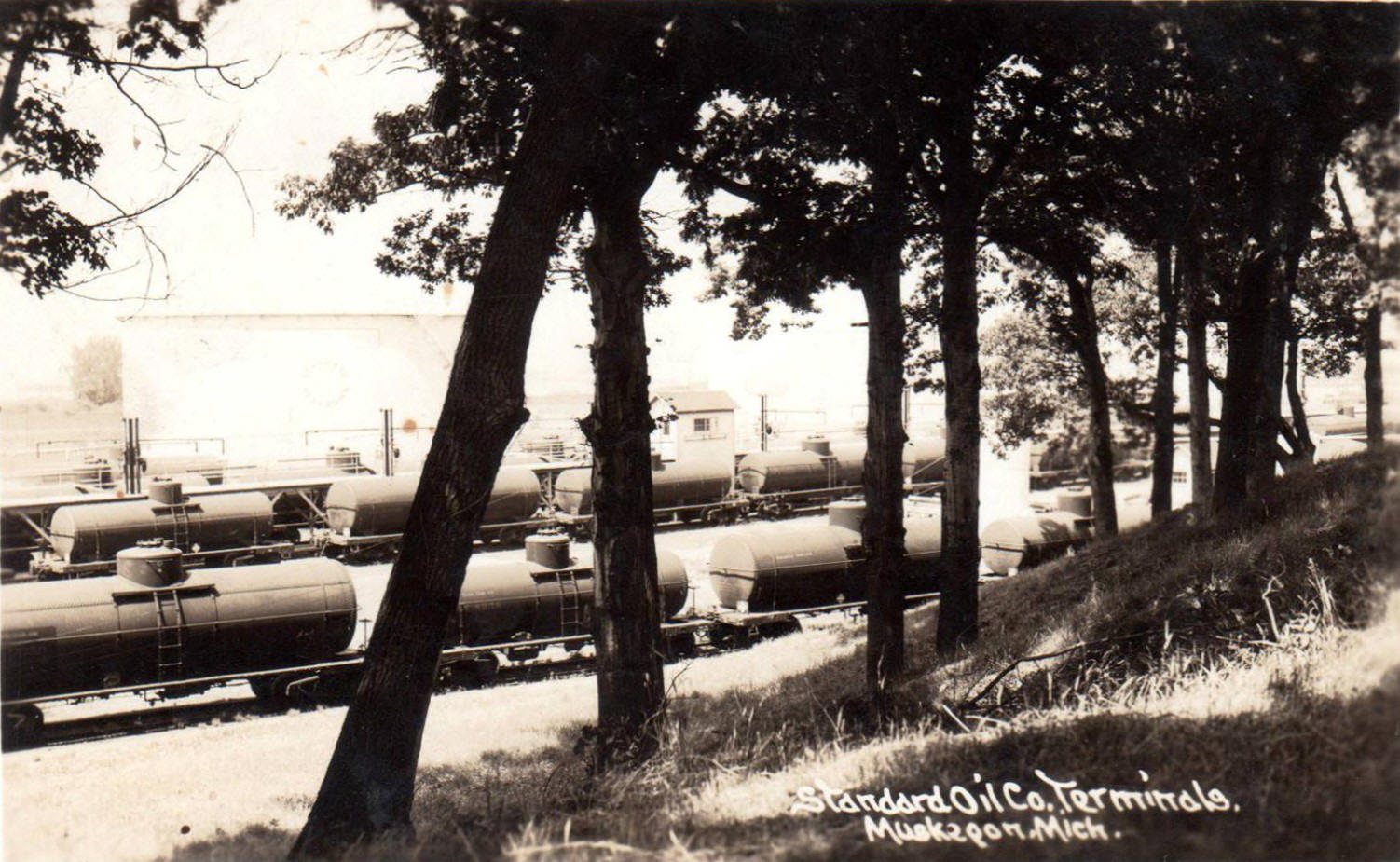 |
|
The former location of a sawmill, in the spring of 1912, this site
fronting Muskegon Lake and the mouth of Ruddiman Creek was purchased by
the Standard Oil Company for the erection of large petroleum storage
tanks. According to 1924 press reports, the location could store up to
16,000,000 gallons of gasoline. Serviced by the railroad, after decades
of use, the approximately 16 acre site was shut down in 1991 and the
tanks were removed. Public access to the waterfront was restored with
the City of Muskegon's purchase of the property, and the building of the
Lakeshore Bike Path, rimming the southern shore of Muskegon Lake. |
|
|
 |
|
Lake Street vehicular bridge,
constructed 1891. |
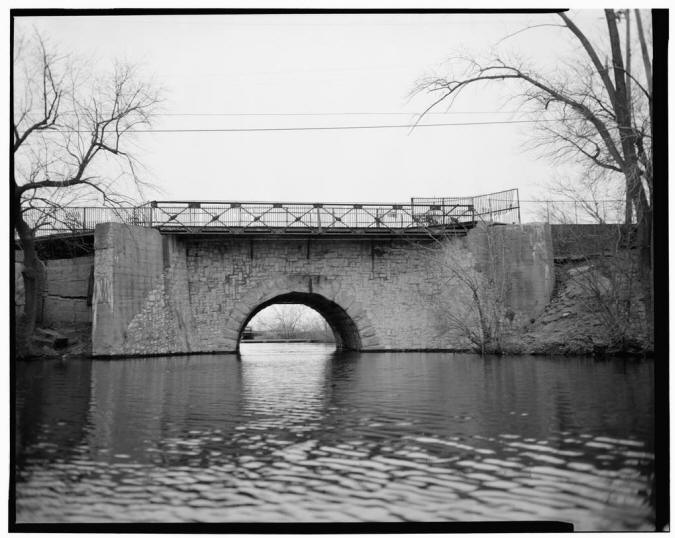 |
|
photo by Dick Stauss, November 1985 |
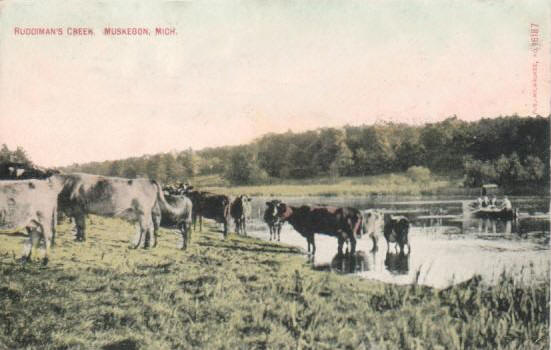 |
Cattle at Ruddiman's Creek. |
|
 |
|
|
 |
|
|
 |
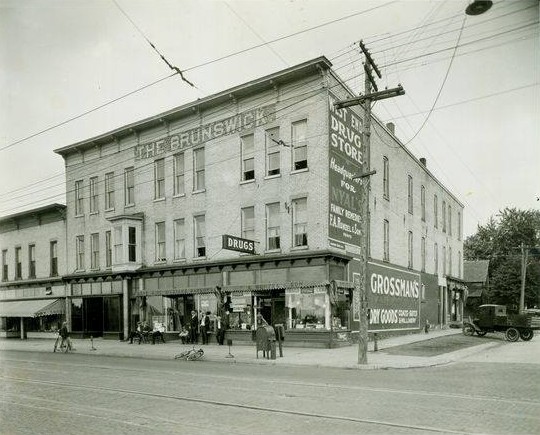 |
 |
The Rivoli Theater opened on Saturday,
November 5, 1921 in Lakeside as a silent theater, showing a Tom
Mix feature, followed by Wallace Reid in 'The Valley of the
Giants' in it's second week of operation. The move to Talkies
was made in 1929. Rechristened the Our Theater in 1931, in was a
single screen theater.
The theater, with its distinctive rounded roof, can be seen in
the picture below, taken in 1939. The theater would again be
renamed in 1965 as the Harbor Theater. |
|
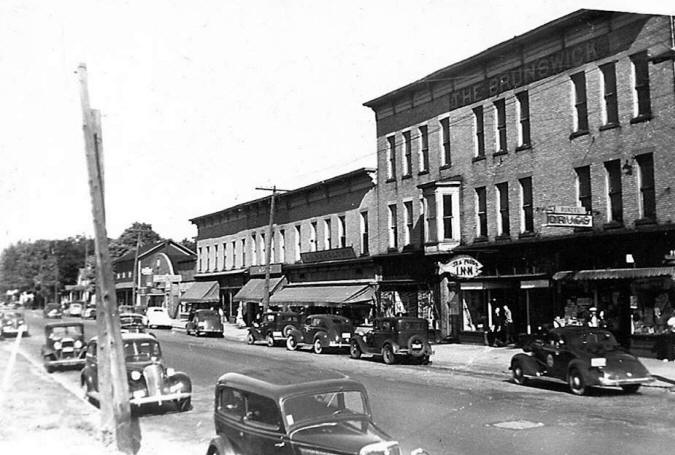 |
 |
The Lakeside shopping district. |
|
|
|
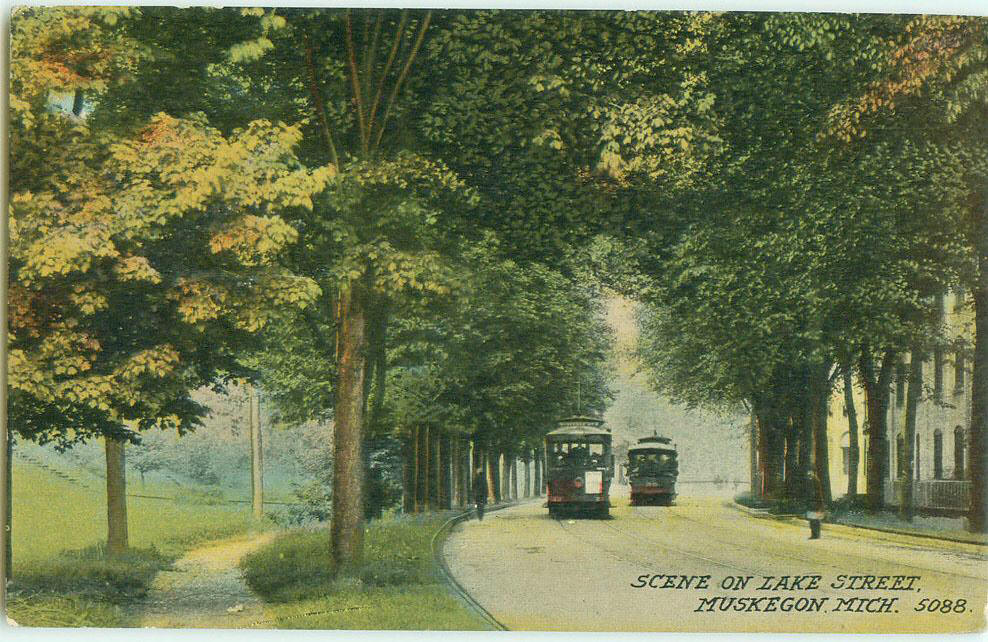 |
|
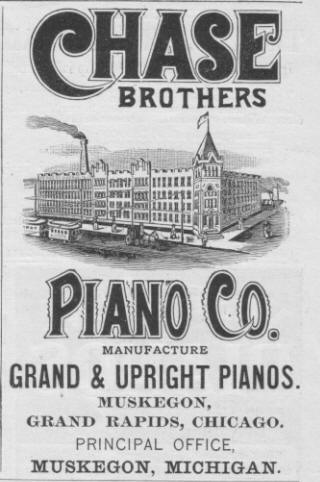 |
 |
| With the demise of the lumbering industry, local
leaders saw the need to diversify the local economy.
In 1889, Chase Brothers was drawn to Muskegon by the
Muskegon Board of Trade (later known as the Chamber of
Commerce) from Grand Rapids. It was the first of
numerous businesses to open in or relocate to Muskegon.
|
|
|
|
|
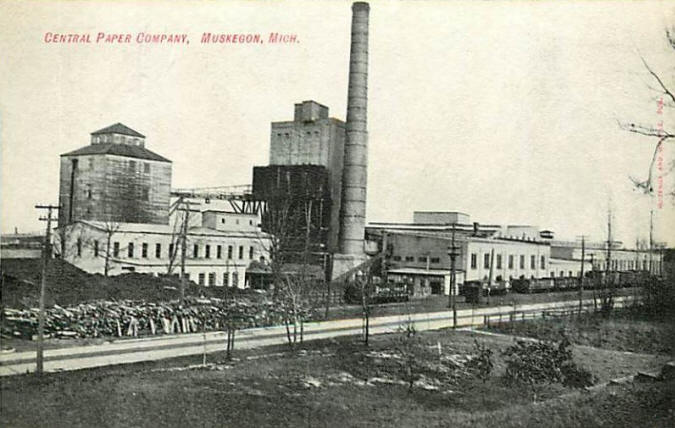 |
| Central Paper Company, around 1912. The plant dates
from 1899 when
Eugene Meurer arrived from Germany, with plans to
manufacture paper. He purchased 15 acres next to the
Chase-Hackley Piano Company, on the shore of Muskegon Lake. The
mill was closed in 2009 and demolition of the facility began in
2012. |
 |
|
|
|
 |
The Muskegon Country Club.
In October 1908, the Muskegon Golf Club purchased land for a
course. Scottish designer
Tom Bendelow, nicknamed the Johnny Appleseed of American
Golf, was employed to layout the property. In 1920, the group
contracted with famed course designer Donald Ross for a major
redesign. |
|
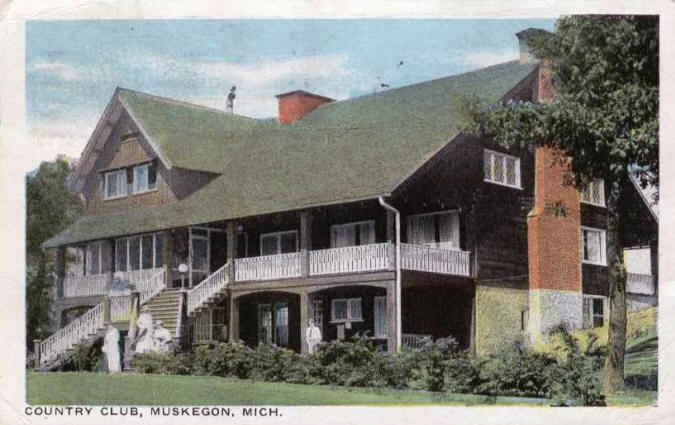 |
|
|
|
|
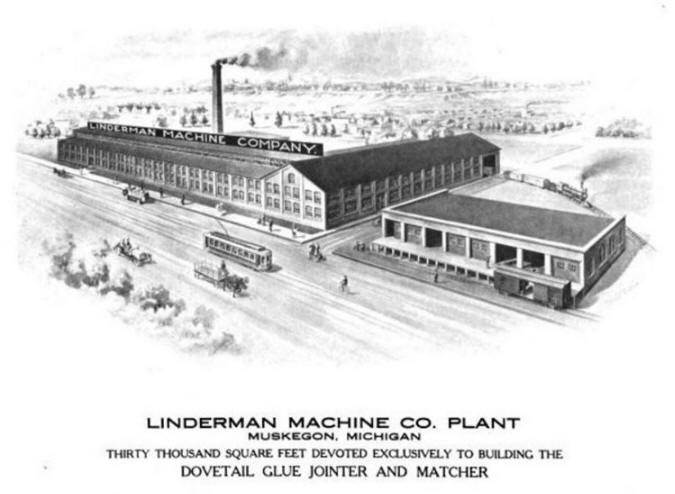 |
|
|
|
Linderman Machine Co. on Lake St. (now Lakeshore Dr.) in 1911. It would
later be known as Linderman Steel and Machine Co and during the war
years, the company switched over to the manufacture of munitions.
Ultimately, the plant was purchased by Borg-Warner and operated for
many years as Norge Machine Products. |
|
|




















